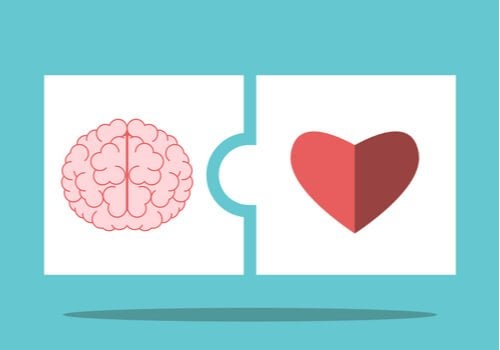In recent years, emotional intelligence has increased. More and more people are interested in your study and how your knowledge can help them better manage their emotions, however few people really know their origin. His appearance can be found in 1990 in a book in which Salovey and Mayer try to explain what emotional intelligence is and how it articulates in our behaviors and minds.
Salovey was a professor at Yale University, while Mayer was a postdoctoral student at the time, having researched together and published several articles on the subject, despite this, many attribute the concept to his best driver, Daniel Goleman, who popularized emotional intelligence. according to Salovey and Mayer in 1996, after publishing a book entitled: Emotional Intelligence: Why It May Be More Important than IQ.
- The concept of emotional intelligence is slightly different for Salovey and Mayer than for Goleman.
- For this reason there was some confusion about what the original theory would be.
- In this article we will see exactly what this concept is for the two authors who built it.
According to the definition of these authors’ first book, emotional intelligence is the ability to process information about one’s emotions and those of others, as well as including the ability to use this information as a guide to reflection and behavior.
Thus, people with emotional intelligence pay attention to emotions, use them, understand them, and handle them well; on the other hand, these skills serve as adaptive functions that provide benefits for themselves and others. Considering that a person has a high emotional intelligence, the two authors talked about four basic skills:
In this model of emotional intelligence, each domain develops in four different phases, but this process does not occur spontaneously. On the contrary, it usually requires a conscious effort of the person, then we will see the four phases in more depth.
The first skill of emotional intelligence according to Salovey and Mayer is the identification of one’s emotions and those of others, first of all the person must be able to understand how he feels, does it include emotions, but also thoughts and those that generate them?in the second phase you acquire the ability to do the same with other states, for example, other people’s feelings or those expressed through art.
In the third phase, the person acquires the ability to adequately express his emotions, so he also learns to convey his needs related to his feelings, finally in the fourth phase he acquires the ability to distinguish correct and incorrect expressions from other emotions. .
In the first phase people focus their thinking on the most important information, at this point feelings are not taken into account, in the second stage, on the contrary, emotions begin to be perceived with sufficient intensity to be identifiable. The person can use them to help make a decision.
According to Salovey and Mayer, in the third phase, emotions would cause a person to fluctuate from one emotional state to another, so he would be able to consider different views on one subject. Finally, in the fourth phase, feelings would lead him to make more correct decisions and think more creatively.
First, you gain the ability to distinguish one basic emotion from another, as well as use the right words to describe them. This ability is then developed, allowing the person to place this feeling in their emotional state.
In the third phase, the person is able to interpret complex emotions, for example, a reaction that mixes disgust and fascination or fear and surprise, finally also acquires the ability to detect the transition between two emotions, such as anger to shame. or surprise to joy.
First of all, this ability requires the will not to limit the role that emotions play, this, which is easier to achieve with positive emotions, is much more difficult with negative ones, in this step we will go further by allowing us to choose feelings. we’ll identify with whether they’re useful or not.
In the previous phase, the person would acquire the ability to study emotions in relation to himself and others, this would be done according to his level of influence, wisdom or evidence; ultimately, the person would be able to manage their emotions and those of others. others moderating negative emotions and increasing positive ones.
The model of emotional intelligence according to Salovey and Mayer does not bring together, much less, everything we know today about emotional intelligence, but it goes back to the origin of the concept, to its foundations, which at the time was a real revolution.
Perhaps the strongest point of this model is its simplicity and the fact that it has a gradation that facilitates its understanding, so it is a wonderful starting point to immerse yourself in the wonderful world of emotions.

